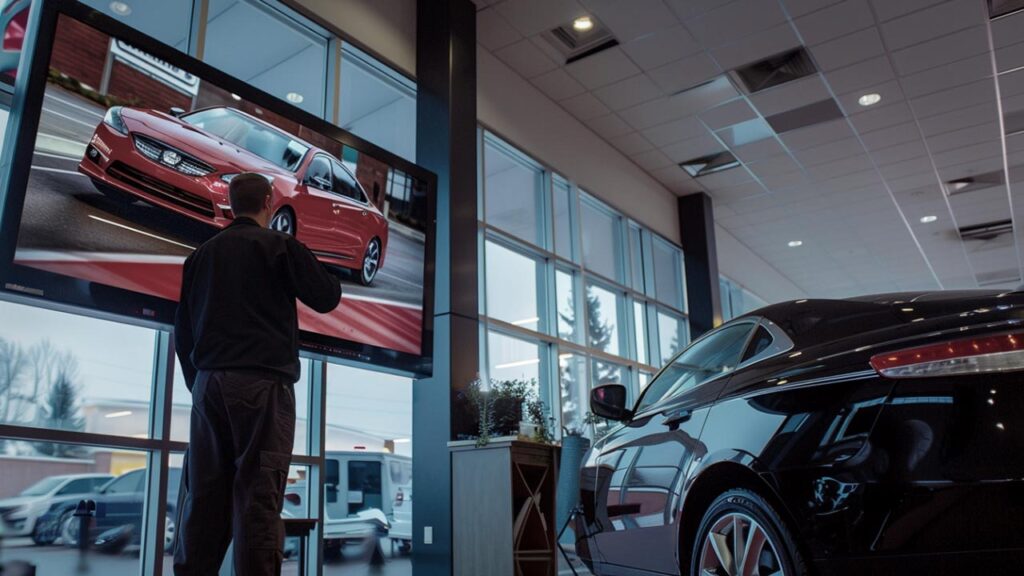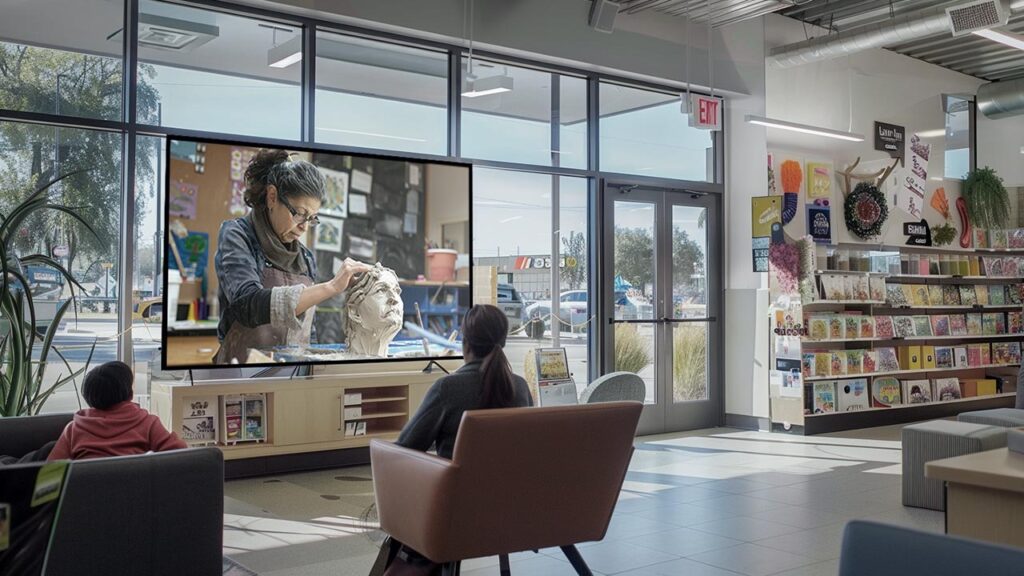In-Store Digital Signage in 2025: The New Era of Retail Engagement
In-Store Digital Signage in 2025 explores how cutting-edge technologies like AI, IoT, and real-time data are transforming physical retail spaces into intelligent, interactive environments. This article breaks down the latest innovations, real-world use cases, and ROI-driven strategies that make digital signage a must-have for forward-thinking retailers in today’s competitive landscape.
Table of Contents
- Introduction: The Evolution of In-Store Digital Signage
- Emerging Technologies Powering Digital Signage in 2025
- Use Cases: How Retailers Are Innovating with Digital Signage
- The ROI of Modern Digital Signage
- Challenges and Considerations
- Future Outlook: What’s Next After 2025
- Top 5 Frequently Asked Questions
- Final Thoughts
- Resources
Introduction: The Evolution of In-Store Digital Signage
Digital signage has come a long way from being static flat screens that loop generic content. In 2025, it is an intelligent, dynamic, and integral part of the in-store customer experience. As consumer expectations grow and physical retail competes with e-commerce, digital signage is no longer optional—it’s a strategic necessity.
By 2025, global spending on digital signage is projected to reach $35.5 billion, according to MarketsandMarkets, driven by the increasing demand for context-aware, real-time, and AI-powered displays.

Emerging Technologies Powering Digital Signage in 2025
AI-Driven Personalization
Artificial intelligence has revolutionized how content is curated and delivered in-store. AI engines analyze real-time data—customer demographics, store traffic, and even weather patterns—to display hyper-personalized messaging.
Example: A clothing store displays rain jackets when rain is detected in the local forecast or recommends items based on the customer’s loyalty program data.
IoT Integration and Smart Sensors
IoT-connected devices provide granular insights into customer behavior. Motion sensors, shelf sensors, and mobile integrations work together to:
- Trigger specific content when someone approaches a display
- Monitor dwell time
- Adapt content based on store conditions
This adds a layer of intelligence that bridges physical customer behavior with digital reactions in real-time.

Touchless and Interactive Displays
As hygiene-conscious shopping habits linger post-pandemic, touchless interfaces using gesture control, voice, or QR-based interaction are replacing traditional touchscreen kiosks.
Emerging tech includes:
- Voice-commanded digital assistants embedded in signage
- AR-enabled smart mirrors
- Smartphone-controlled interfaces for deeper engagement
Real-Time Data-Driven Content
Retailers now harness data to run contextual campaigns—syncing digital signage with:
- Inventory systems (to promote what’s in stock)
- CRM tools (to show loyalty messages)
- External feeds like social media trends or news
The goal? Deliver relevant content that not only attracts attention but drives conversion.

Use Cases: How Retailers Are Innovating with Digital Signage
Product Discovery and Upselling
Digital signage acts as a digital sales assistant, recommending add-ons or similar items based on current selections.
Case Study: Sephora uses interactive digital walls where customers scan products to see tutorials, reviews, and suggested pairings—driving both discovery and basket size.
Queue Management and Wayfinding
Retailers are deploying smart signage for line optimization, helping direct customers during busy hours.
- Displays show estimated wait times
- Navigation screens guide shoppers to the shortest checkout or department

Localized Promotions and Dynamic Pricing
In 2025, retailers can adjust pricing in real time through their digital signage network—automatically syncing with inventory or competitive pricing data.
For example, a grocery store can flash markdowns on perishable items nearing expiration or run time-sensitive offers during off-peak hours.

The ROI of Modern Digital Signage
Cost vs. Value
While upfront costs for hardware, software, and content creation remain high, the long-term return justifies the spend. According to Intel, smart digital signage can increase in-store sales by up to 33%.
Customer Experience and Retention
Interactive and adaptive signage turns shopping into a two-way experience, resulting in:
- Higher dwell times
- Increased purchase intent
- Repeat visits
Operational Efficiency
Digital signage reduces reliance on paper signage and manual labor, offering centralized control and scheduling of campaigns across multiple locations.
Challenges and Considerations
Privacy Concerns
With AI and sensor-based data collection, consumer privacy and consent are critical. Retailers must:
- Ensure GDPR/CCPA compliance
- Use anonymized data
- Offer clear opt-in mechanisms
Scalability and Maintenance
As networks grow, maintenance and software updates become complex. Cloud-based signage platforms with remote management tools are now essential for ensuring uptime and scalability.

Future Outlook: What’s Next After 2025
Looking beyond 2025, we expect digital signage to evolve into a fully immersive, omnichannel interface.
Predicted trends include:
- Holographic displays
- 5G-powered content streaming
- Integration with Metaverse-like retail experiences
AI and machine vision will continue to refine how signage responds to emotions, micro-expressions, and even biometric cues.

Top 5 Frequently Asked Questions
Final Thoughts
In-store digital signage in 2025 is no longer just a digital billboard—it’s an AI-powered retail intelligence system. By merging personalization, automation, and data, retailers can not only enhance customer experience but also optimize operations and maximize ROI.
The most important takeaway? Digital signage is now a core component of the smart retail ecosystem—blurring the lines between physical and digital, and creating a seamless, intelligent, and interactive shopping experience.
Resources
- MarketsandMarkets Digital Signage Market Report
- Intel Retail Digital Signage Statistics
- Statista: Retail Technology Trends 2025
- Deloitte Future of Retail 2025










Leave A Comment